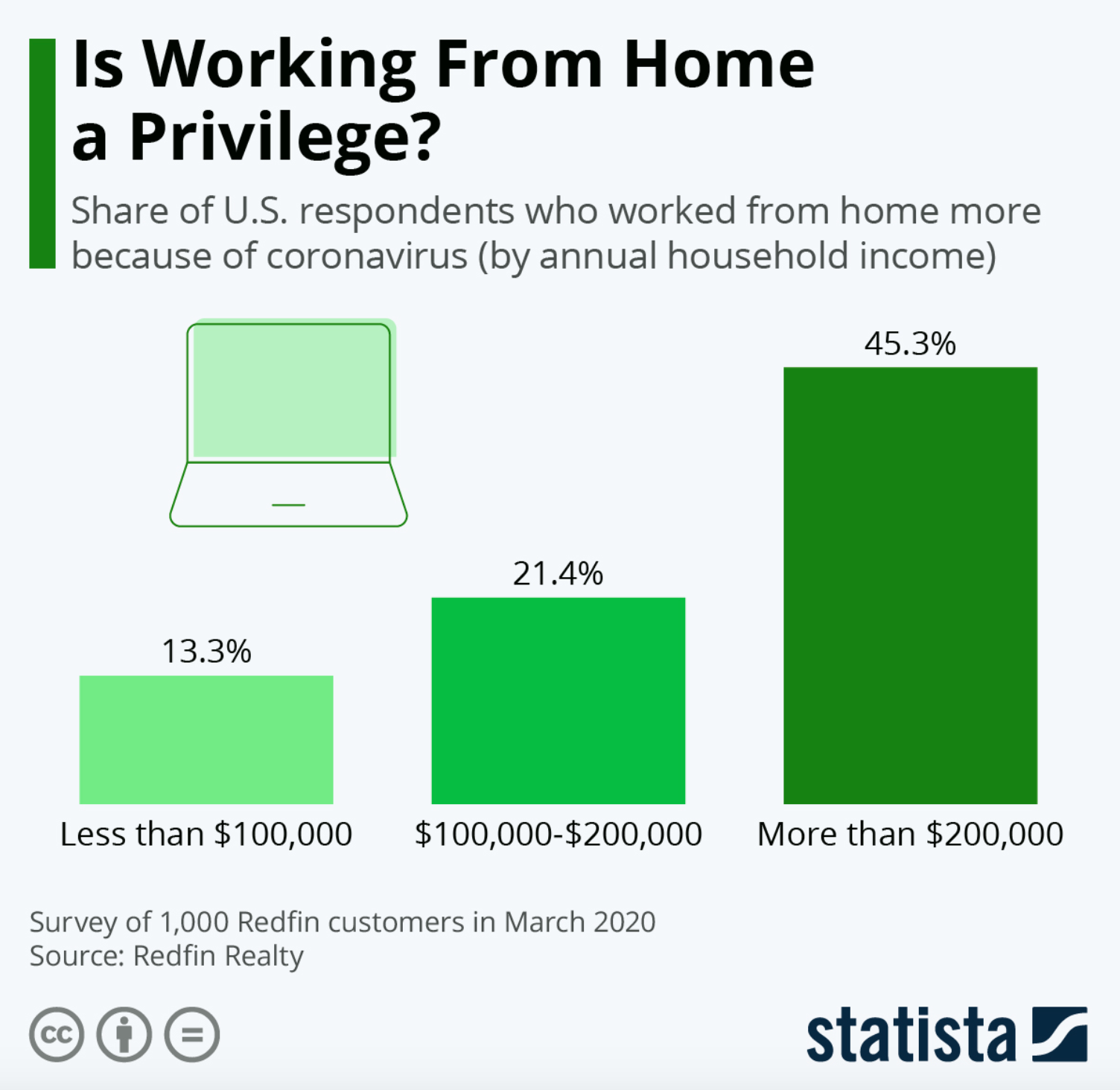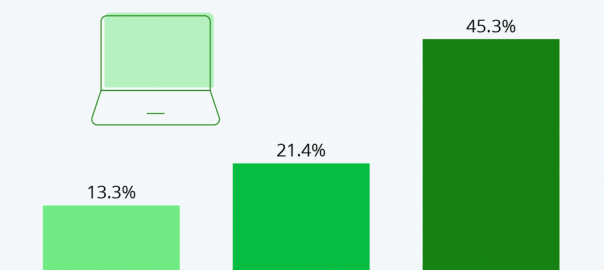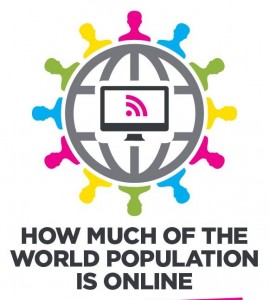For all the uncertainty that Coronavirus has caused worldwide, there’s one thing that we can be sure of: remote work is booming.
The rise of working from home (WFH) is logical considering global lockdowns and the necessity of self-isolation, but it’s still impressive to see how swiftly workers and businesses alike have adapted to continue to perform despite office closures.
Video conferencing platform, Zoom experienced a 535% rise in daily traffic in the month of March, while productivity and communication apps have also seen increases in usage.
Fortunately, technology has evolved just in time to accommodate widespread WFH initiatives in the midst of Coronavirus. It’s hard to imagine such easy transitions only five or 10 years ago.

Image: Statista
But how will the WFH boom affect the wider gig economy? And will the bubble burst when normal life resumes? Let’s explore the long-term ramifications of Coronavirus and remote work:
The Rise of WFH
At a glance, WFH is being recognised as a temporary measure to keep businesses productive while their doors are forcibly closed due to safety concerns.
However, The Guardian speculates that Coronavirus could lead to a permanent shift towards home working. Effectively, COVID-19 has given even the most hesitant of businesses the chance to perform a trial run of WFH and the early results appear to be promising.
Fears over a lack of technological infrastructure, losses of productivity and too few avenues to contact workers have comfortably been put to bed in many cases, with reports emerging that WFH can even lead to boosts in productivity among workers.
Successfully transitioning from offices to home-offices can help businesses to save money on office operational costs and even save on the workspace they use. Whereas, employees can be left feeling more productive owing to less commuting time and more downtime outside of working hours.
Given the noticeable benefits for businesses in allowing employees to continue to work from home, the knock-on effects for the gig economy are huge. Businesses will become more accustomed to calling on remote help, while the use of technology that’s capable of putting decision-makers in touch with remote workers will become more natural.
It’s fair to expect the gig economy, along with all WFH endeavours to grow exponentially following the fallout of Coronavirus.
Bursting Bubbles?
WFH is a two-way challenge for both businesses and their employees to overcome. CNBC reports that while 51% of US workers would favour a life WFH rather than commuting into the office each day, only 7% had access to a ‘flexible workplace’ prior to the Coronavirus pandemic.
Prior to COVID-19, those who largely benefited from WFH initiatives were largely managerial-level workers with access to telework software. The circumstances forced upon businesses by the pandemic has sparked WFH initiatives to spring into life, but it’s worth remembering that millions of jobs depend on face-to-face communication. Restaurants may be able to adapt to working on a takeaway-based operation, but what about waiters and waitresses?
With this in mind, it’s perhaps unsurprising that CNBC has also found that as much as 60% of workers feel that their WFH setup wouldn’t become permanent in the months following the pandemic.
Despite a lingering feeling that the WFH bubble will ultimately burst once lockdown measures are eased, the National Bureau of Economic Research has recently announced a study that shows as much as 37% of jobs in the US can be done at home.
The jobs capable of being undertaken at home amount to 46% of the wages in the US – a seismic figure compared to the reported 7% who claimed the ability to WFH prior to COVID.
The figures that relate to individuals working from home is only ever-rising, and the 30% gulf between WFH being undertaken and jobs that can enable working from home is a large one that self-isolation measures have shown can be filled. With further developments in remote technology just around the corner, it’s entirely plausible that the 37% of jobs capable of being undertaken at home will steadily increase over time.
Despite the expectation of employees that they’ll return to office life once isolation is over, there is no evidence to suggest that the remote work bubble will burst. Naturally, it will shrink over the short term, but the gig economy will continue to rise regardless of what happens in the aftermath of the shot in the arm the industry received from global lockdowns.
Counting The Costs of COVID
However, despite clear optimism at the accelerating growth of the gig economy, it’s important to remember that the path to prominence won’t be entirely free of potholes.
The lockdown to halt the spread of COVID-19 will bring about widespread economic difficulties. Unemployment is continually rising and will certainly grow as businesses come to terms with huge losses in the first half of 2020.
One significant problem is that it remains to be seen just how bad the financial climate becomes. As countless industries grind to a halt, it’s certain that international economies have jolted backwards, with stocks continuing to fall and businesses increasingly eager to cut costs where possible.
As this happens, one of the easiest ways for companies to lower expenditures is by cutting ties with their contractors. As they’re effectively unattached freelancers, this is logically the least messy way of shortening their payrolls.
Inevitably, this will cause significant problems for the gig economy and the platforms that serve freelancers like Upwork and Fiverr. Gig economy platforms may their money by connecting employers with freelancers and this drop in business could set the industry back before it really begins to reap the rewards of increased adoption.
With this in mind, it’s important to recognise that while a gig economy boom is already taking place, the real dawning of a new WFH era may take a little bit longer to appear as economies look to consolidate their losses.
Accelerating Towards a Remote Future
While the aforementioned disclaimer feels necessary, it’s reasonable to expect the road towards a working revolution to be a bumpy one. The Motley Fool speculates that gig economy platforms like Upwork could be left reeling for two or more quarters before it begins to reap the benefits of our newfound fondness for remote work.
It’s reasonable to expect any setbacks to be short-lived in the grand scheme of things as far as the gig economy is concerned. Businesses are learning that the flexibility of freelancers are ideal as companies learn to become more dynamic. Furthermore, studies by Mastercard found that gig economy payments reached highs of $ 204 billion in 2018, with the figure set to skyrocket to $ 450 billion in 2023, thanks to shifting cultural values and increased work flexibility.
What’s unignorable is the fact that WFH has just become the hottest topic in business. Companies are currently falling over themselves in a bid to invest in adapting their processes to allow remote work, and these investments will be set to continue to grow once we see a return to normal life.
While it may not be entirely plain sailing for the future of remote work, today there’s little doubting that it’s very much the future – and for all the turmoil caused by COVID-19, it could well have played its part in helping the future arrive much faster.
Business & Finance Articles on Business 2 Community
(66)










